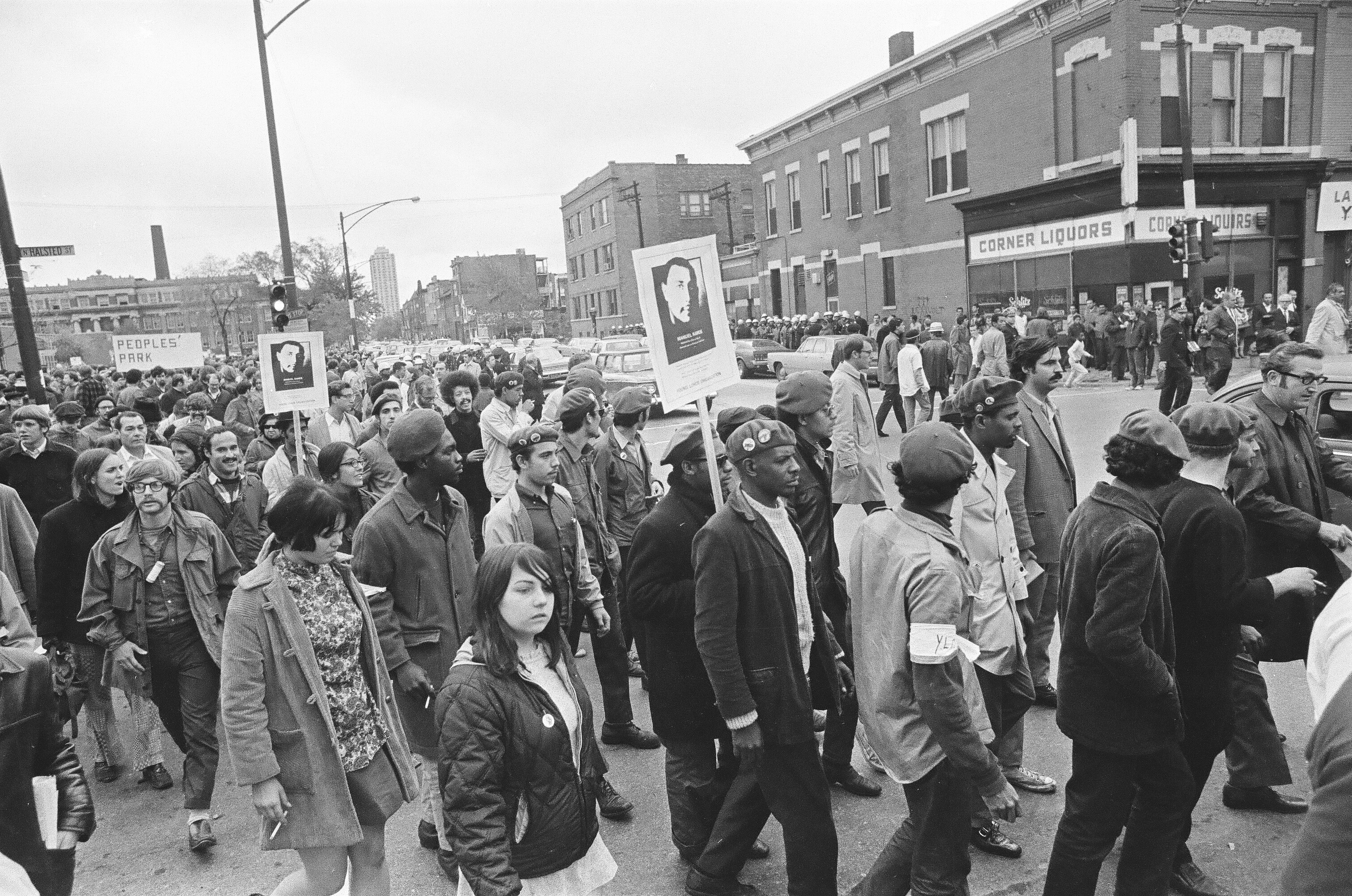September 11, 2025—February 8, 2026
 Tengo Lincoln Park en mi Corazón: Young Lords in Chicago explores the Young Lords Organization's (YLO) trajectory in the Lincoln Park neighborhood amidst gentrification and urban renewal, which displaced the vibrant Puerto Rican community of the 1950s and 1960s. Originally a street gang, the Young Lords transformed into a prominent civil rights organization. The exhibition explores the origins of the movement, emphasizing the concept of counter-mapping as a means of activism and community empowerment. Counter-maps are cartographies that reveal the knowledge and resistance of communities, challenging historical displacement and invisibility imposed by traditional maps.
Tengo Lincoln Park en mi Corazón: Young Lords in Chicago explores the Young Lords Organization's (YLO) trajectory in the Lincoln Park neighborhood amidst gentrification and urban renewal, which displaced the vibrant Puerto Rican community of the 1950s and 1960s. Originally a street gang, the Young Lords transformed into a prominent civil rights organization. The exhibition explores the origins of the movement, emphasizing the concept of counter-mapping as a means of activism and community empowerment. Counter-maps are cartographies that reveal the knowledge and resistance of communities, challenging historical displacement and invisibility imposed by traditional maps.
The exhibition features archival materials, historical artifacts, photography, murals and prints, with works by Carlos Flores, Ricardo Levins Morales, and John Pitman Weber. It also includes newly commissioned work by Sam Kirk and a central multimedia installation by Arif Smith with Rebel Betty, inviting visitors to engage with one of the most influential movements in Latinx civil rights history, rooted in the everyday struggles of a Chicago neighborhood.
One of the most significant acts of resistance occurred in May 1969, when the Young Lords occupied the Stone Administration Building at McCormick Seminary, now DePaul's School of Music North Building. The site, one of the few remaining in Lincoln Park directly tied to the YLO, is now marked by a public plaque recognizing their activism. It anchors the exhibition’s focus on place-based memory and the political legacy of the Young Lords in Chicago.
Tengo Lincoln Park en mi Corazón: Young Lords in Chicago is curated by DePaul University Professor Jacqueline Lazú and organized by DePaul Art Museum. This exhibition is made possible through major support from The Andy Warhol Foundation for the Visual Arts, Abby Pucker, The Vincentian Endowment Fund, Dammrich, the DePaul College of Latin American and Latino Studies, and the Center for Latino Research.
Image credit: Young Lords members protesting the Vietnam War in a march from Lincoln Park to Humboldt Park, 1969. ST-70004742-0005, Chicago Sun-Times collection, Chicago History Museum.